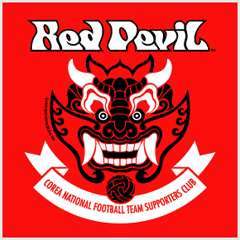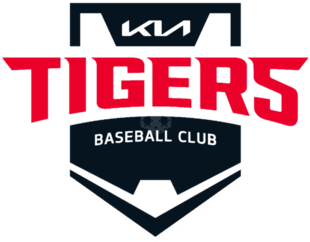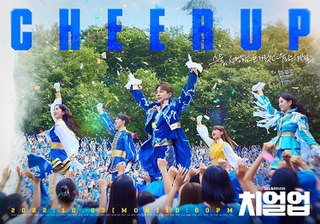
The Hanshin Tigers are a Nippon Professional Baseball team playing in the Central League. The team is based in Nishinomiya, Hyōgo Prefecture, Japan, next to their main stadium, Hanshin Koshien Stadium.

The Lotte Giants are a South Korean professional baseball team based in Busan. They are a member of the KBO League. The Lotte Giants are owned by Lotte Corporation.
The KBO League is the highest level league of baseball in South Korea. The KBO League was founded with six franchises in 1982 and is the most popular sports league in South Korea. The Kia Tigers are the most successful team, having won 11 of the 42 championships.

The Ole Miss Rebels are the 18 men's and women's intercollegiate athletic teams that are funded by and represent the University of Mississippi, located in Oxford. The first was the football team, which began play in 1893.

ShoreTown Ballpark is a stadium in Lakewood, New Jersey. It is primarily used for baseball and is the home field of the Jersey Shore BlueClaws South Atlantic League baseball team, affiliated with the Philadelphia Phillies Major League Baseball team. It is also used for outdoor concerts, featuring touring musical artists such as Bob Dylan. It was built in 2001 and has 6,588 fixed seats with extended additional space on grass berms and at picnic tables around the 360-degree concourse.

Red Devils or Bulgeun Angma is the official supporting group for the Korea Republic national football team.

The Doosan Bears are a South Korean professional baseball team based in Seoul. Founded in 1982, they are a member of the KBO League. The Bears have won six Korean Series titles and play their home games at Seoul's Jamsil Baseball Stadium.

An ōendan (応援団), literally "cheering squad" or "cheering section", is a Japanese sports rallying team similar in purpose to a cheerleading squad in the United States, but relies more on making a lot of noise with taiko drums, blowing horns and other items, waving flags and banners, and yelling through plastic megaphones in support of their sports team than on acrobatic moves. In addition to cheering for their own teams, ōendan have been known to lead fans in cheers which tease and taunt the other team and its fans. This is usually done in the spirit of good competition, but occasional fights have broken out if the taunting gets too heated. Smaller ōendan are sometimes called ōenbu.

The Kia Tigers are a South Korean professional baseball team founded in 1982 and based in the southwestern city of Gwangju. Until 2001, they were known as the Haitai Tigers. The Tigers are members of the KBO League and are the most successful team in Korean baseball, having won the national Korean Series championship 11 times with a perfect 11–0 record. Their home stadium is Gwangju-Kia Champions Field in Gwangju.

The Hanwha Eagles are a South Korean professional baseball team based in Daejeon. They are a member of the KBO League. The Eagles' home ballpark is Hanwha Life Eagles Park. The Eagles have won the Korean Series once, in 1999, and the league pennant twice. As of 2023, the Eagles have played in the postseason 13 times, being the runner-up in the Korean Series five times.

The Daejeon Hanbat Baseball Stadium, also known as the Hanwha Life Eagles Park due to sponsorship reasons, is a baseball park in Daejeon, South Korea. The stadium is located in the vicinity of Daejeon Station. Located in Daejeon Hanbat Sports Complex with other main sports facilities in Daejeon, it is currently used as the primary home ballpark of Hanwha Eagles of the KBO League.

Greater Nevada Field is a Minor League Baseball venue located in Reno, Nevada, in the Western United States. Opened on April 17, 2009, it is the home of the Triple-A Reno Aces of the Pacific Coast League. Greater Nevada Field is on the north bank of the Truckee River and welcomes over 500,000 ticketed fans per year.
The Yonsei-Korea rivalry is the college rivalry between two universities located in Seoul, South Korea, Yonsei University and Korea University. Located within the same city, the campuses are only thirty minutes apart. Korea University's symbol and mascot is the Tiger and Yonsei University's is the Eagle. Hence, match-ups between the two institutions are referred to as "Tigers vs Eagles".

The 2013 Korea Professional Baseball season was the 32nd season in the history of the Korea Professional Baseball. The Samsung Lions won the regular season and Korean series.

Louisiana State University is the flagship university of the state of Louisiana, United States. This article describes the traditions of the university.
Kim Sun-bin is a South Korean professional baseball infielder for the Kia Tigers of the KBO League.

The 2016 KBO League season was the 35th season in the history of the Korea Professional Baseball League.

A cheer screening is a type of film screening associated with Japanese cinema that encourages audience participation through cheering, typically in the form of applause, singing, and the shouting of responses to statements made by characters. Other terms used to describe this category of screening include cheering screening, vocal screening, screaming screening and voice screening. When applied to Indian films, it is often called a masala screening.

Cheer Up is a South Korean television series starring Han Ji-hyun, Bae In-hyuk, Kim Hyun-jin, Jang Gyu-ri, Lee Eun-saem, and Yang Dong-geun. It premiered on SBS TV on October 3, 2022, and aired every Monday and Tuesday at 22:00 (KST).
Cho Hae-jung is a South Korean actress. She is known for her role in 2017 TV series Weightlifting Fairy Kim Bok-joo.
















